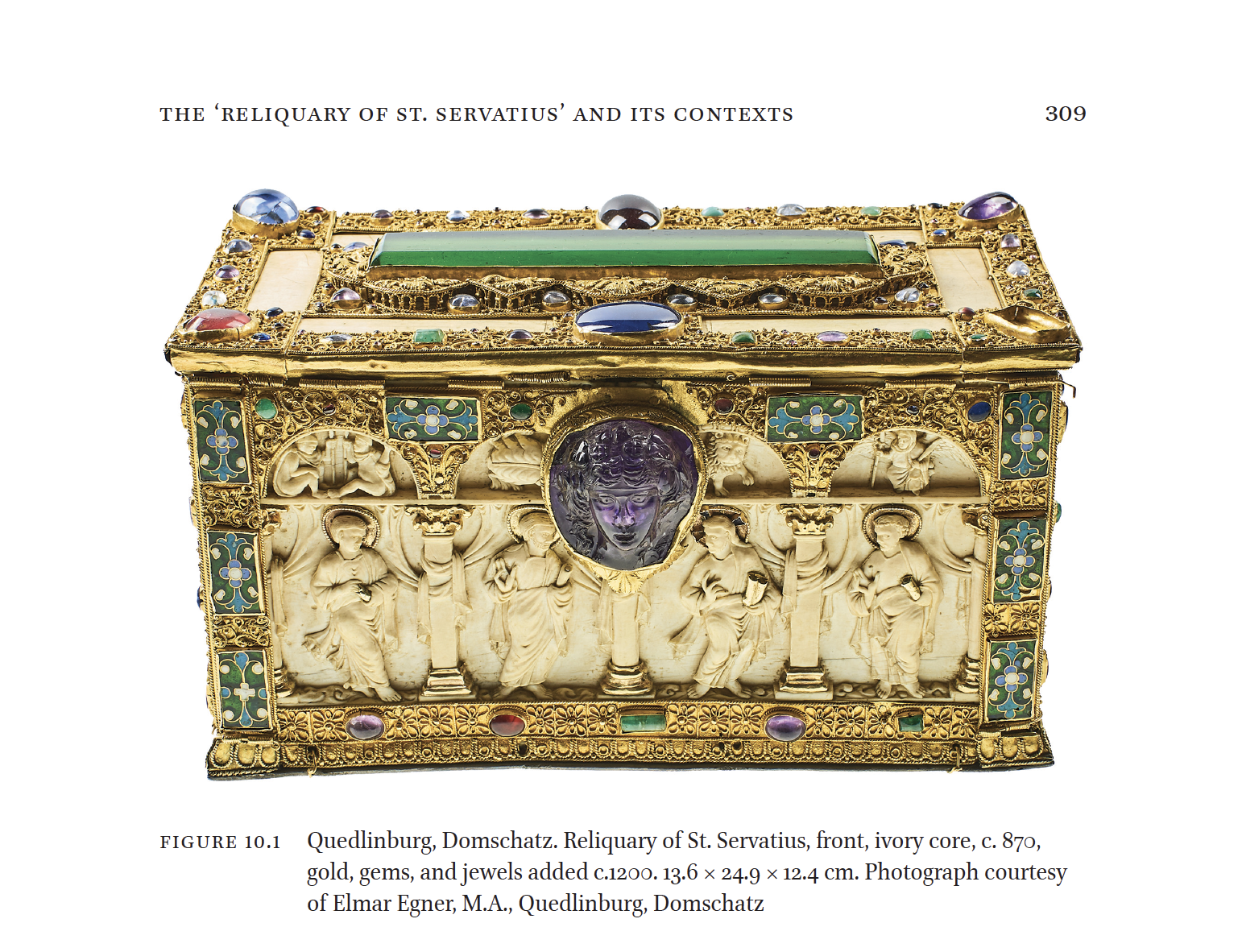Evan A. Gatti published a book chapter, co-authored with Eliza Garrison, that examines the transhistorical contexts for the reliquary casket of St. Servatius.
Co-authored by Professor of Art History Evan Gatti with Eliza Garrison (professor of history of art & architecture at Middlebury College), the chapter, ” A Reliquary Revisited: The Reliquary of St. Servatius and Its Contexts,” appears in A Companion to the Abbey of Quedlinburg in the Middle Ages (Brill, 2022). The reliquary of St. Servatius has been held in the treasury of the Abbey Church of Quedlinburg in Northern Germany since the first decades of the 11th century.
Likely made two hundred years earlier as part of a pair of boxes, the small ivory box (about the size of a shoebox) was later encased in a golden skeleton inlaid with precious gems. The box is decorated with the 12 signs of the zodiac, carved in niches above the heads of the 11 Apostles and Jesus Christ. The place of the creation of the box, its original function and its reuse across generations remain contested.
In the book chapter, Garrison and Gatti, who have both published on the box independently, come together to discuss the dynamic and interconnected contexts across the box’s long history: from its construction and first uses in the Early and High Middle Ages, through the town’s appropriation and the Abbey Church’s reconsecration by the Nazis during WWII, the theft of items from the church treasury by a U.S. soldier after the war, and the church and town’s designation as UNESCO World Heritage Site in recently re-unified Germany.



